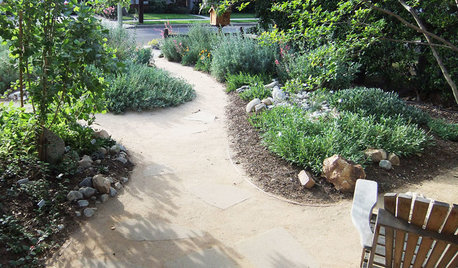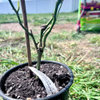Drip irrigation - how to know how much water?
dancingnancy55
16 years ago
Featured Answer
Sort by:Oldest
Comments (21)
anntn6b
16 years agoRelated Professionals
Glassmanor Landscape Architects & Landscape Designers · Lake Oswego Landscape Architects & Landscape Designers · Montgomeryville Landscape Architects & Landscape Designers · Goodyear Landscape Contractors · Hartford Landscape Contractors · Surprise Landscape Contractors · Braintree Landscape Contractors · Flagstaff Landscape Contractors · Pomona Landscape Contractors · Porterville Landscape Contractors · Post Falls Landscape Contractors · Salem Landscape Contractors · Sun City Center Landscape Contractors · Weslaco Landscape Contractors · York Landscape Contractorsmichaelg
16 years agomichaelg
16 years agodancingnancy55
16 years agomichaelg
16 years agomichelle_co
16 years agopagan
16 years agoberndoodle
16 years agoJeannie Cochell
16 years agolagomorphmom
16 years agoJeannie Cochell
16 years agojont1
16 years agomichaelg
16 years agoberndoodle
16 years agodancingnancy55
16 years agomichaelg
16 years agoberndoodle
16 years agomichelle_co
16 years agodancingnancy55
16 years agoscarleta
16 years ago
Related Stories

GARDENING GUIDESHow to Install a Drip Irrigation System
Save time and water with a drip watering system in your vegetable garden — a little patience now will pay off later
Full Story
GARDENING GUIDES5 Things to Know About Watering Your Native Garden
Ensure the success of your new plantings with a smart approach to irrigation
Full Story
KITCHEN SINKSEverything You Need to Know About Farmhouse Sinks
They’re charming, homey, durable, elegant, functional and nostalgic. Those are just a few of the reasons they’re so popular
Full Story
GARDENING AND LANDSCAPINGWhat to Know Before You Buy Teak Outdoor Furniture
Learn about finishes, weathering, care and that age-old oil debate to get the teak furnishings that suit you best
Full Story
GREAT HOME PROJECTSWhat to Know Before Refinishing Your Floors
Learn costs and other important details about renewing a hardwood floor — and the one mistake you should avoid
Full Story
CONTRACTOR TIPSBuilding Permits: What to Know About Green Building and Energy Codes
In Part 4 of our series examining the residential permit process, we review typical green building and energy code requirements
Full Story
WORKING WITH PROSWhat Do Landscape Architects Do?
There are many misconceptions about what landscape architects do. Learn what they bring to a project
Full Story
KITCHEN CABINETSChoosing New Cabinets? Here’s What to Know Before You Shop
Get the scoop on kitchen and bathroom cabinet materials and construction methods to understand your options
Full Story
MOST POPULARWhat to Know About Adding a Deck
Want to increase your living space outside? Learn the requirements, costs and other considerations for building a deck
Full Story
FARM YOUR YARD6 Things to Know Before You Start Growing Your Own Food
It takes time and practice, but growing edibles in the suburbs or city is possible with smart prep and patience
Full StoryMore Discussions










roseman